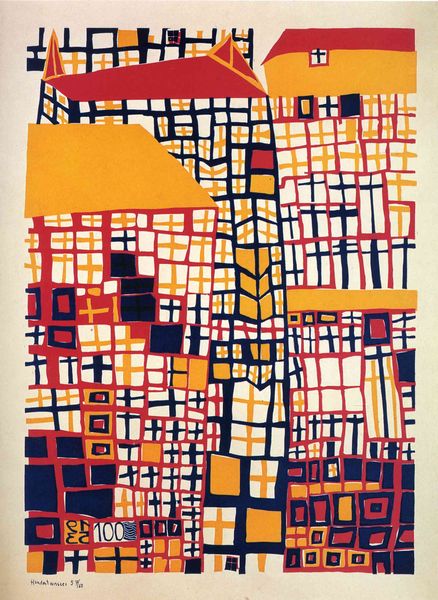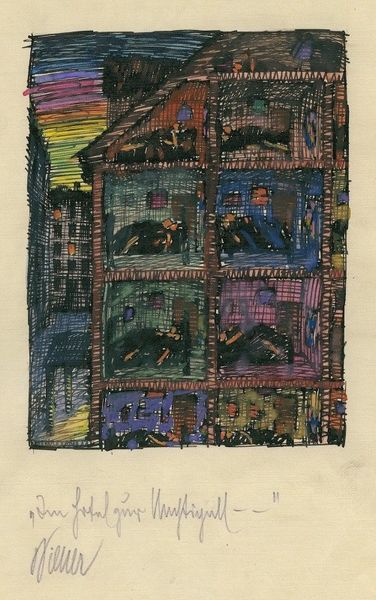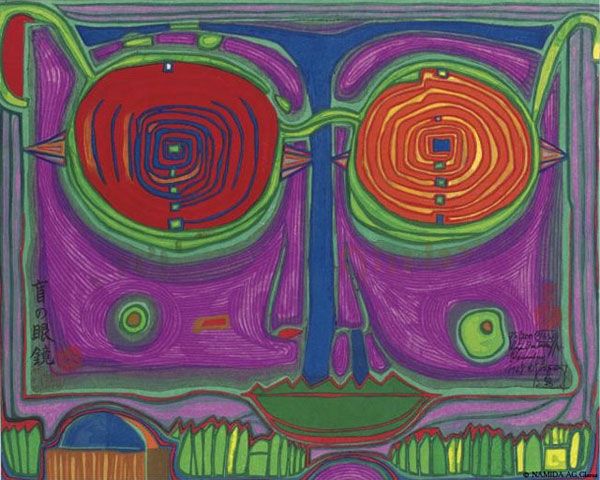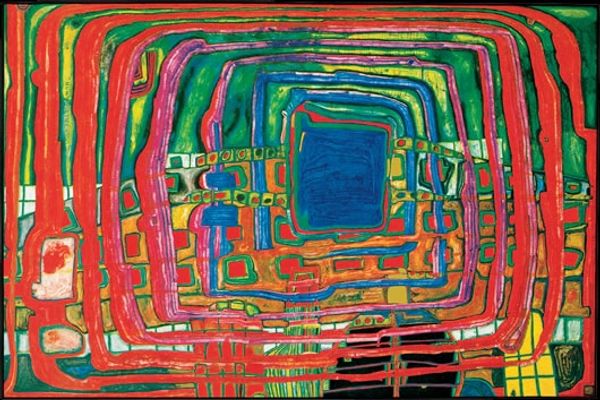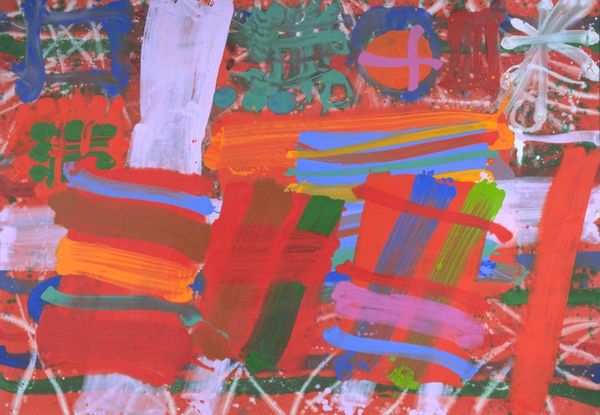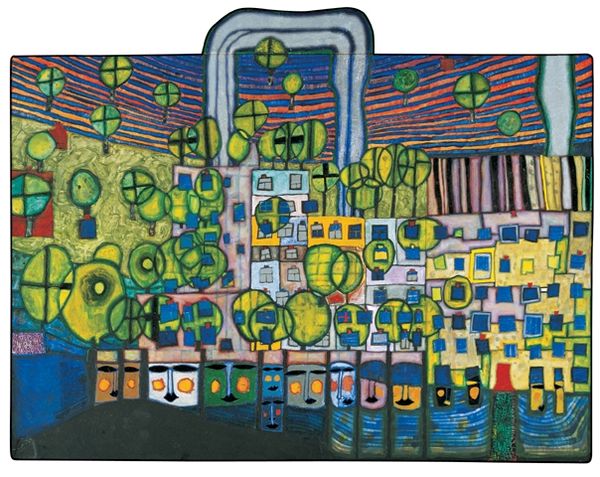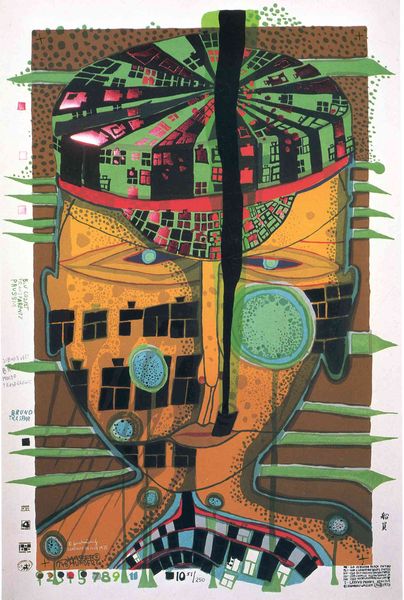
Copyright: NAMIDA AG, Glarus (displayed with the permission of Hundertwasser Non-Profit Foundation) The displayed work of art is protected under the copyright law. In particular, it is not permitted to reproduce, to alter, to print or to publish these works of art. Violations will be prosecuted according to civil and criminal law.
Editor: This mixed-media piece, “686 Good Morning City,” was created in 1970 by Friedensreich Hundertwasser. The city feels densely packed, almost claustrophobic, with those bold colours vying for attention. What stands out to you? Curator: It’s precisely that density I find intriguing. Look at how Hundertwasser uses the grid—the basic module of modern urban planning—but subverts it. The hand-drawn lines, the variations in colour and size, and those odd voids hovering above disrupt the very notion of mass production and standardization. Editor: So, it's like he's critiquing the industrial city? Curator: In a way, yes. Consider the context: 1970. Mass production of housing, pre-fabricated elements... Hundertwasser, and many artists of the time, were deeply concerned with the alienation this produced. He champions irregularity and the handmade. Those 'voids,' as you called them, disrupt any easy reading, resisting capitalist imperatives of efficient space usage. What is being obscured and occluded, what kind of politics does it hint at? Editor: I see, so the materials and techniques themselves are a statement? Curator: Absolutely! The tactile nature of the mixed media – painting combined with perhaps collage or printing techniques we don't see, and the obvious lack of perfect lines, speak to a desire to reclaim art from the purely industrial processes of reproduction, inserting human touch and expression. This piece argues that art isn't separate from material reality; it’s fundamentally shaped by its production and consumption. Editor: That's really insightful! I never thought about the connection to mass production that way. It gives the artwork a completely different weight. Curator: Precisely! Examining the "how" often reveals the "why." Hopefully this helps unpack how he felt about cities.
Comments
No comments
Be the first to comment and join the conversation on the ultimate creative platform.
